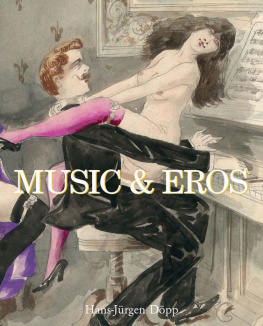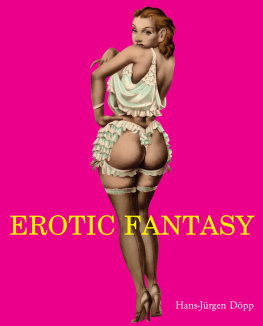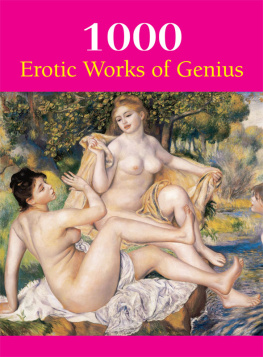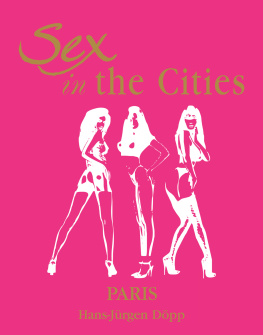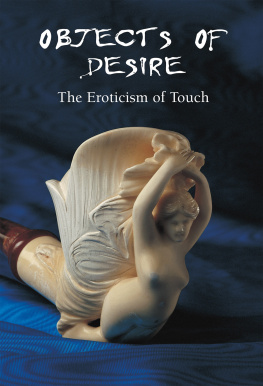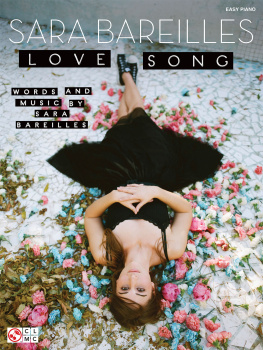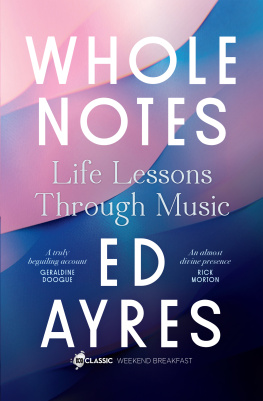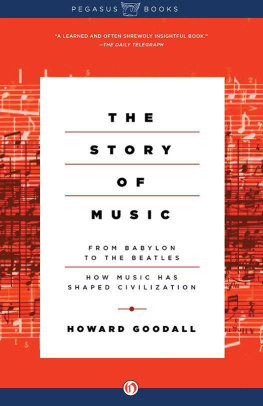Author: Hans-Jrgen Dpp
Translation: Niels Clegg
BASELINE CO. LTD
61A-63A Vo Van Tan Street
Nam Minh Long, 4 th Floor
District 3, Ho Chi Minh City
Vietnam
Confidential Concepts, worldwide, USA
Parkstone Press International, New York, USA
Image-Bar www.image-bar.com
Alan Arkin
Sassy Attila
Paul mile Bcat
Charlotte Berend-Corinth
Mahlon Blaine
Ernest Borneman
Otto Dix / Artist Rights Society (ARS), New York / VG Bild-Kunst, Bonn
A. Erbert
Fritz Erler
Georg Erler
Csar Famin
Michel Fingesten
Nancy Friday
Ernst Gerhard
Ernst Theodore Amadeus Hoffman
Alfred Hrdlicka
Von Hugo
Fritz Janowski
Jean-Michel Jarre
Jorgi Jatromanolakis
Allen Jones
Erich Kstner
Ferdinand Kora
Martina Kgler
Boris Laszlo
Estate Man Ray / Artist Rights Society (ARS), New York / ADAGP, Paris
Harry Mathews - All Rights Reserved/ Edition Plasma
Rudolf Mernyi
Georges Mouton
Julian Murphy
Marek Okrassa
Hans Pellar
Estate of Pablo Picasso / Artist Rights Society (ARS), New York
Karl Reisenbichler
Eugene Reunier
Frank Rubesch
Vsevolod Salischev,
Rudolf Schlichter
Otto Schoff
Mark Severin
Jarka Stika
Sddeutsche Zeitung
Alex Szkely
Marcel Verts
No parts of this publication may be reproduced or adapted without the permission of the copyright holder, throughout the world. Unless otherwise specified, copyright on the works reproduced lies with the respective photographers. Despite intensive research, it has not always been possible to establish copyright ownership. Where this is the case, we would appreciate notification.
ISBN: 978-1-78310-702-5
Hans-Jrgen Dpp
Music & Eros

Contents

Jean-Auguste-Dominique Ingres,
The Turkish Bath, 1862.
Introduction: Music & Eros
For Doris
Cunning Odysseus had to protect his shipmates from the alluring song of the Sirens by plugging up their ears with wax. However, Odysseus himself did not want to forego the beauty and voices of these dangerous creatures. As a precaution, he had himself bound to the ships mast so as not to fall victim to the dangerous singing.
How can something as simple as sound transform into a powerful love spell? How is it possible through singing alone to inspire sensuality? Why does music play such a major role in love? We want to ascertain the origin of the strong erotic effect of song, dance and music. What explains the magic of musical sounds and rhythms?
Arnold Schnberg once spoke of the instinctive life of sounds. What is the relationship between this and the instinctive life of man?
Ovids Metamorphoses
Engaged in a chase with nymphs, Pan stalked one of them, the wood nymph Syrinx. She flees from him and when her flight is hindered by a river, she pleads with the waves, her liquidas sorores, to transform her. When Pan grabs her, his hands grab hold of nothing but reeds. While he is lamenting his lost love, a breath of wind and the reeds create sounds whose melody touches the god. Pan breaks the reeds, some long and some shorter pipes, connects the carefully gradated ones with wax and plays the first few notes like the breath of wind had, but instead with living breath and as a song of lamentation. This is how the pan flute was created. The music comforts Pan as he is not able to unite with the nymph who has vanished but not vanished and lives on in his hands in form of the sounds of a flute.
At the origin of music stands a longing for the unattainable. During flute play, the absent becomes present; the instrument, Syrinx and the nymph become one. The nymph has vanished but Pan holds her in his hands in form of Syrinx.
The first few chapters sketch the close connection between music and lust by referring to the example of artistic prostitution showcased in different cultures. The sensual-physical relationship is emphasised in particular through dance and its rhythms.
That music exercises enormous power shows when one tries to regulate it and to limit its influence.
We attempt to sketch the roots of music that reach into a world different from ours by referencing philosophers like Schopenhauer, Nietzsche and Kierkegaard.
Compositional creation as a way to transform unfulfilled love into happiness is a theme we explore by taking a look at Beethoven and Hugo Wolf.
Literary examples (Tolstoy, Thomas Mann, Arthur Schnitzler) show us the at times fatal power of music.
Playing music with others is just one way of finding happiness. The relationship between the musician and the instrument itself can also blossom into a loving one.
The physical element always remains the basis of eroticism. However, this element has increasingly been replaced in favour of a spiritual element through a process of sublimation that has gone hand in hand with cultural development. In the final chapters, which focus on music and dance in the present, an impression is created that suggests a return of the physical element, which is celebrated as sexual liberation.
A simple search for eroticism in romantic music has led to the discovery that music is also an echo of bodily functions: the echo of ones own heart, ones breath and ones own desire.
Trying to express the relationship between eroticism and music with the help of words can only ever be described as an attempt at understanding their connection. The one who tries to catch an iridescent soap bubble with his hands will make it burst and instead will have a slight residue sticking to his fingers. The same thing can happen with our topic; we spin a web of language and all that remains are a few puddles of words on a piece of paper in which the secrets of their changing relationship can no longer be discerned. The exploration of our topic is therefore already limited by a methodological boundary due to the incompatibility of the two languages of music and speech.
So we let the iridescent bubble float unobstructed. What we are attempting, is to observe it in different lights and from varying perspectives.
Music, not unlike eroticism, is a medium of transition into another world. This is reminiscent of a question posed by Jean-Paul (Johann Paul Friedrich Richter (1763-1825)): Oh musical art, are you the evening breeze of this life? Or are you its morning air?
With respect to the pictures we have chosen; our topic is difficult, even impossible to illustrate. A picture that features an ecstatic facial expression could just as easily illustrate the topic as a harmonious Dutch landscape painting or a drawing with abstract and free-floating lines. Even the most abstract work of art maintains a connection with the powers of Eros, and each picture could be expressed in a composition of sounds. Subsequently we picked superficial pictures whose subject matters show an immediate connection between Eros and music. Because many of the pictures we have chosen have never been displayed, this method seems justifiable. However, those who view music as something holy will see it desecrated in these pictures. Others, on the other hand, may see in them a laughing genius. As much as we do not wish to distinguish between serious and entertaining forms of music in this essay, we also do not want to draw distinctions between sophisticated art and trivial art. The instinctual sexual drive is subject to all works of art. Everything else is merely a question of the degree of sublimation.
Next page
